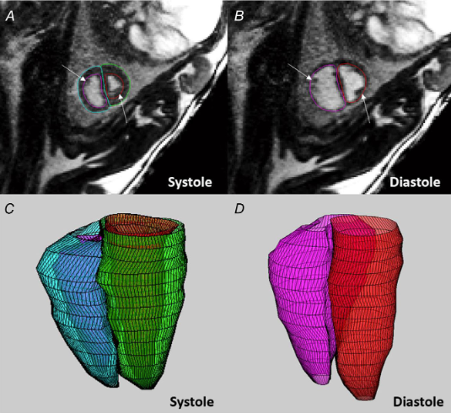In a pioneering initiative, researchers aim to uncover signs of an often-missed condition in unborn babies (called ‘foetal growth restriction’) by adding magnetic resonance imaging (MRI) scans to the suite of screening options for pregnant people.
NIF is working with University of South Australia researchers who collaborate internationally, combining advanced imaging techniques with research models to see intricate processes like foetal blood flow in real time.
Usually, MRI monitoring is only used to understand the most complex foetal health problems, but this is a disadvantage for babies with foetal growth restriction (FGR).
“FGR is generally diagnosed and monitored with ultrasound, but is often missed until the baby is born,” says UniSA Professor Janna Morrison.
These babies do not grow as expected because of a lack of oxygen and nutrients, and experience a greater risk of stillbirth, distress during labour, and an increased risk of problems in later life, such as poor cardiovascular health, impaired brain function, and obesity.
“We are conducting research to understand MRI’s value as a screening tool for FGR, as well as ensuring its safety and efficacy,” Professor Morrison says.
Instead of inducing early labour to avoid stillbirth – with its own potential complications of poor outcomes and time in a neonatal intensive care unit – the researchers are looking at what they can do before birth to ensure FGR babies have a better start in life.
Teams use NCRIS–funded MRI facilities to investigate blood flow
Professor Morrison leads the Early Origins of Adult Health Research Group (EOAHRG), working with NIF MRI facilities and the expertise of Research Radiographer NIF Fellow Georgia Williams, in a collaboration with the Hospital for Sick Children (Toronto), King’s College London and University College London.
The teams use MRI to measure the blood flow and the supply of oxygen in vessels in the foetus and the placenta – part of preclinical studies at the Large Animal Research and Imaging Facility (LARIF), within the South Australian Health and Medical Research Institute (SAHMRI).
The ability to access MRI capability in SA came with the future-focused NIF plan that supported construction of LARIF as part of SA Pathology, with NCRIS funding assistance, in 2008. LARIF became part of the Preclinical, Imaging and Research Laboratories (PIRL) and SAHMRI in 2012. LARIF is able to support an array of research, with a range of imaging infrastructure, including x-ray, a cath lab, computed tomography (CT), positron emission tomography (PET) and MRI.
With the support of an Australian Research Council Discovery Project and a Biotechnology and Biological Sciences Research Council Project, EOAHRG accessed the MRI capacity with support from the Federal Government’s research infrastructure roadmap.

Imaging technology also reveals cardiac function, real-time medicine behaviour
Foetal imaging is challenging because of the challenges with syncing the scanning to the foetal heartbeat, the small size of foetal structures, their unpredictable movement and the discomfort of mothers during a scan, Professor Morrison explains.
But these scanning techniques have already given us a better understanding of how oxygen and nutrient-rich blood streams toward the brain during a baby’s development, say the team.
“We can follow the route for oxygen- and nutrient-rich blood from the umbilical vein, see it bypass the liver and flow through major vessels to the heart, brain and parts of the upper body,” says Professor Morrison.
“The imaging technology also has the potential to give insights in complex flow patterns in congenital heart disease, which can help us develop and test new treatments.”
At the moment, the teams have validated the imaging techniques for foetal oxygenation, blood flow and cardiac function. The real-time blood flow data that tracks medicines have also opened the door for testing FGR therapeutics and interventions.
Ultimately, EOAHRG aspires to give all babies the best start to life, so they can grow into healthy adults. Through the teams’ research with NIF’s capabilities at LARIF, they are on their way to achieving this ambitious goal.